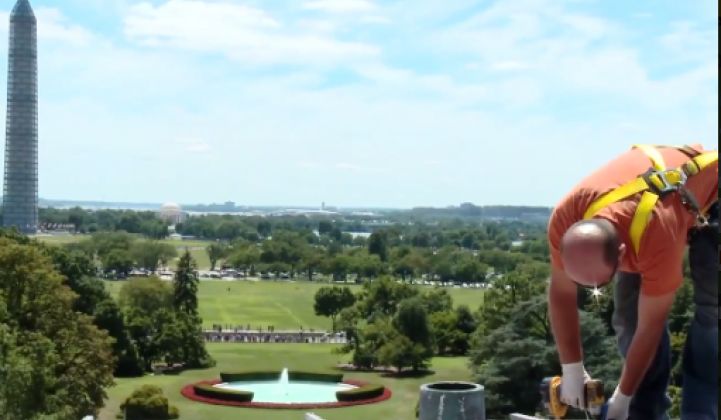When the underwhelming UN climate talks in Warsaw came to a close last month, America did something remarkable: it didn't look like the bad guy.
Australia and Canada took that honor. With a new prime minister devoted to tearing down the country's previous climate policies, Australia came to the meetings with a renewed focus on doing as little as possible. And Canada, which has morphed from mild-mannered climate dove into a tar-sands-fueled petrostate, is now bearing the brunt of criticism from the environmental community.
Still, there's a perception that the U.S. is doing relatively little to curb its carbon emissions -- which is a major sticking point for developing countries worried about a coming binding commitment to reduce their emissions, even though they historically haven't been the biggest emitters.
If Congress is the benchmark, then that perception is accurate. But if judged by executive actions from the Obama administration, the U.S. has certainly made some progress worth noting.
In June, President Obama laid out his climate action plan to double U.S. efficiency and achieve a 17 percent reduction in carbon emissions by 2020 -- a target agreed on at the 2009 Copenhagen conference. The plan circumvents Congress by relying only on executive actions.
Since Obama's speech over the summer, his administration has made progress on new EPA rules, worked through a backlog of efficiency standards, and issued far too many DOE solar and smart grid funding announcements to count. Solar panels were also installed on the White House in early September -- not part of the climate plan, but a symbolic gesture nonetheless.
This week, the administration added a few more to the mix. They keep the momentum alive for federal clean energy efforts, even as Congress prepares to head home for the holidays without passing anything of significance.
Presidential order for federal facilities to triple use of renewable energy
Yesterday, Obama inked an order requiring the government to get 20 percent of its electricity from renewables by the end of the decade. Federal agencies cumulatively get about 7 percent of their electricity from renewables today. With a sprawling portfolio of 500,000 buildings that cost hundreds of billions of dollars to power, the order would represent a significant boost for the industry through 2020. In addition to mandating cleaner energy consumption, Obama's order also directs agencies to use the Green Button tool for more transparent tracking of their energy use.
$250 million loan program for rural efficiency and renewables
Also yesterday, the U.S. Department of Agriculture said it was putting up $250 million for efficiency retrofits in rural areas in partnership with electric cooperatives. The funds will be provided to local utilities to fund efficiency audits, retrofits and renewable energy installations. The money will be provided under the Energy Efficiency and Loan Conservation Program, a program created under the farm bill to promote greenhouse gas reductions and financial assistance to homeowners in rural areas.
Expanding the Better Buildings Challenge to multifamily housing
Earlier in the week, the Department of Energy and the Department of Housing and Urban Development expanded the Better Buildings Challenge to address efficiency in apartments and condos, which are notoriously difficult to reach. The government launched new "accelerators" for local governments designed to better benchmark energy use in multifamily units and establish guidelines for performance contracting -- adding new target markets under the $2 billion already committed for the challenge.
Some of the programs, like the Better Buildings Challenge and the rural loan program, were in place before Obama announced his climate plan. But by bundling these things together under the same umbrella, his administration is trying to show it's doing something to address the climate problem.



